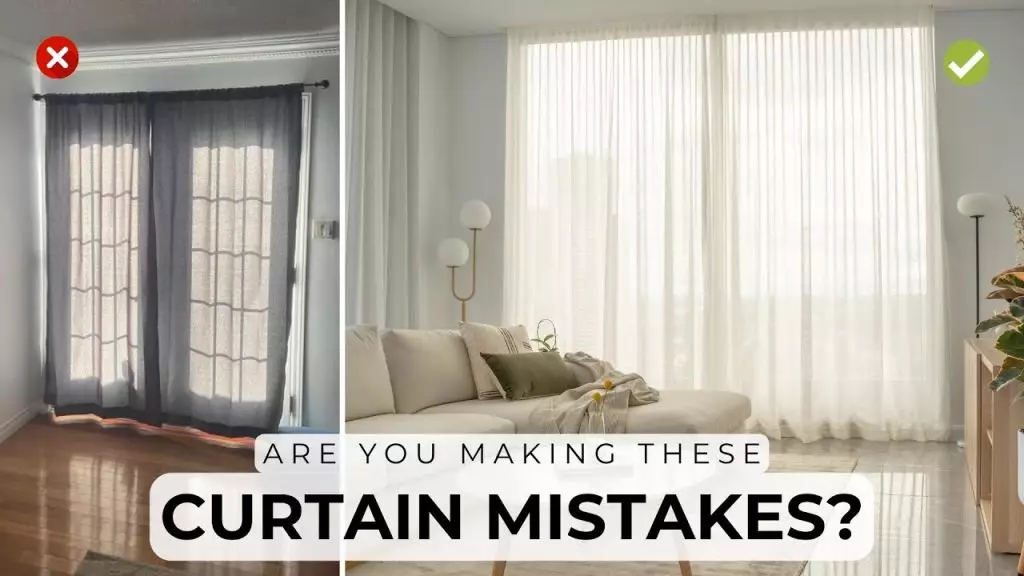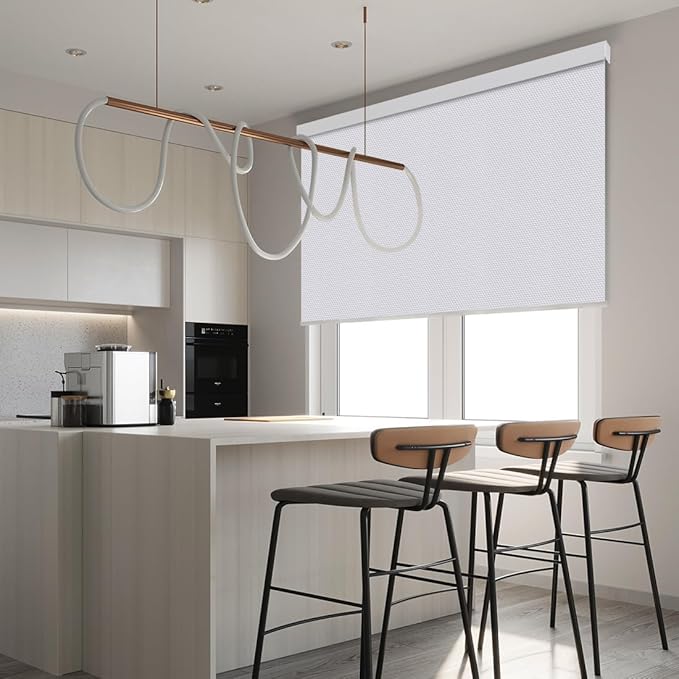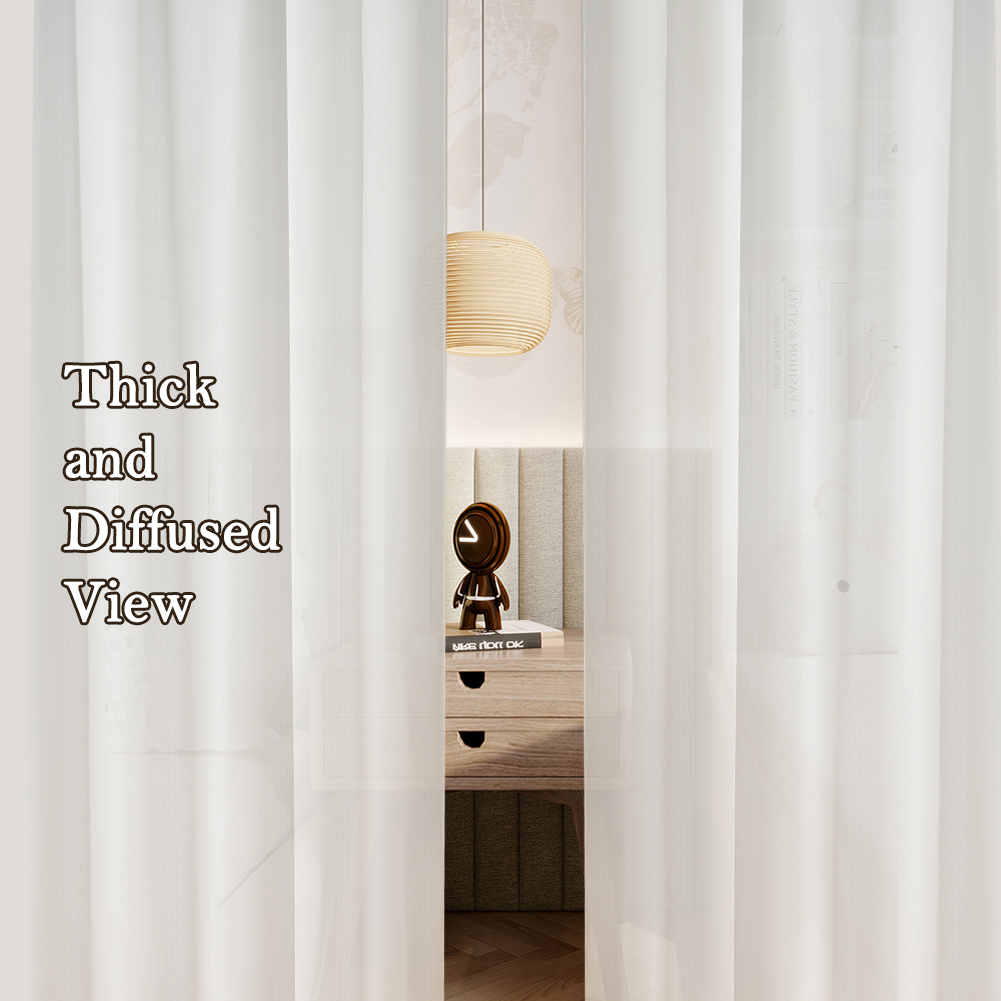5 Rules For Hanging Curtains & Common Mistakes to Avoid!
Date:

A beautiful set of curtains has the power to transform a space into a stunning one. Unfortunately, even the most luxurious fabrics won’t enhance the room if they aren’t hung properly. In this article, I’ll go through my five best rules for hanging curtains and some of the most common mistakes that you should avoid.
Table of Contents
ToggleCurtain Rod or Track Placement
When it comes to curtain rod or track placement, there are two main options that you can go for: either ceiling mount or face mount. Ceiling-mounted curtains create a seamless floor-to-ceiling aesthetic, while face-mounted curtains are suspended from a wall-fixed rod located above a window. Generally, ceiling-mounted curtains are used in more contemporary spaces as they have a cleaner aesthetic. Face mounts, on the other hand, are more commonly used in classic and traditional spaces but they’re equally suited to contemporary homes with more minimalist hardware.
With face mounts, people often make the mistake of mounting the rod too low, making the window look smaller than it actually is or disproportionate in relation to the curtain size. This often occurs when people purchase curtains that are too short, so they have to lower the rod to make up for the lost length. To avoid this common mistake, make sure the curtain rod is mounted at least halfway to two-thirds the height between the top of your window and the ceiling. This will draw your eye upwards, giving the illusion of a taller window and ceiling. Any lower than halfway will create an unbalanced look in the room and the illusion of short ceilings. You can even bring them all the way up to an inch below the crown molding for a bigger impact.
Curtain Rod Length
Another common mistake is purchasing curtain rods that are too short for the window length. This means that the curtain cannot be drawn apart without the stack covering the glass and blocking out light. This will not only make the window look smaller but also make the room feel smaller as there will be less sunlight streaming in. Avoid this mistake by extending your curtain rod 6 to 10 inches (approximately 15 cm to 25 cm) past the edges of your window. Alternatively, measure your window length and multiply it by 1.3 to determine the extra length of the rod. If your space allows for it, if you have no wall clearance on either side, go full length; this will give a dramatic look as the whole wall is covered by fabric when closed while allowing for maximum natural light to enter when drawn apart. For corner windows, you can get one with a corner rod connector to achieve a seamless look.
Curtain Drop Length
Curtain drop is the length from the rod to the bottom hem. There are three main types of drop: float, kiss, and puddle length. Float curtains do not touch the ground at all and hang less than an inch above the floor, creating a modern and minimalist aesthetic that can highlight a beautiful floor and gives a sense of visual airiness to a space. This curtain drop is the easiest to maintain as they don’t accumulate dirt or dust like other drop styles. Kiss curtains barely touch the floor, with just a millimeter or two between the curtain hem and the ground. They are the hardest to accomplish because you have to take super accurate measurements, but they give the most impressive and custom look. The gentle touch of the curtain with the floor facilitates a soft transition between the wall and the floor, which has a room-expanding effect. Puddle curtains have 2 to 4 inches of fabric that, as the name suggests, puddles on the ground. This drop has a romantic and old-world feel as the fabric pooling on the ground adds a sense of luxury and opulence to the room’s ambiance. High-quality heavyweight fabrics such as velvet or washed linen are usually used in favor of lighter fabrics, which adds to the luxuriousness of the atmosphere.
Choosing Curtain Length
It is important to choose one of these drops; otherwise, your curtain will either be too short or too long. Most readymade curtains are 84 inches or 96 inches long, but the standards may vary by country. Some places even sell extra-long curtains that are 108 inches or 120 inches long. If you want anything longer than this, you’ll have to get it custom made. There are also short curtain drops like 72 inches, but these are better for specific applications such as hanging curtains above a built-in bench under a window. If you’re buying readymade curtains, I recommend getting ones that are longer than the distance from your curtain rod to the floor. For example, if you have an 8-foot ceiling and your curtain rods are installed 6 inches down from the ceiling, the distance from the ground to the rod will be approximately 89 inches. In this case, don’t get the 84-inch curtains; instead, get 96-inch curtains. You can then hem the curtain or fold the top if you’re using curtain clips to achieve the float, kiss, or puddle length.
Common Fabric Mistakes
Many people also make the mistake of purchasing curtains that aren’t wide enough. You’ll know that you’ve bought the wrong panel width if, when closed, your curtains cover the windows but are taut and lack fullness. This makes the room look cheap and is one of the reasons why many people often have the misconception that curtains make a room look cheap. It is important to avoid this mistake; instead, buy curtain panels that are 1.5 to 2.5 times the width of your windows. For example, if you have a 2-meter-long window, get 3 to 5 meters of curtain fabric. The extra fabric will make them look full and plush and give you the desirable wavy fold.
Common Materials
Some of the most commonly used curtain materials are silk, linen, and cotton (natural materials), and polyester and velvet (man-made materials). While I do love natural materials, they aren’t always the best choice. Silk is very expensive and will disintegrate with exposure to sunlight, especially if unlined. Linen is beautiful but wrinkles very easily and is notorious for stretching and shrinking in humid environments. If you know what you’re doing, then these fabrics can be a great choice. Otherwise, I suggest getting a synthetic blend fabric, which is typically made from natural materials like cotton and linen combined with polyester. This will give you the linen look that drapes nicely, is more durable, and is easier on the wallet.
Common Curtain Pleat Types
The three most popular pleat types are the ripple fold, pinch pleat, and grommet style. The ripple fold, also known as the S-fold, is one of my favorites and is used in many of my client projects. It gets its name because the fold results in gentle S-curves. Ripple fold curtains are usually installed on a track, as they have pendant clips installed at equal distances that click into the track, resulting in a symmetrical fold. This also makes them super easy to open and close as they glide smoothly across the track. I especially like this look with sheer fabrics as they instantly elevate a space at an affordable price. In case you’re wondering, you can get tracks with a face mount that gives you a similar look to rods.
Installation Tips
The most difficult part of curtain installation is getting the curtain rods level, especially when the rod is longer than 2 meters. My hack is to use a laser level; if you don’t have one, I highly recommend that you borrow one or buy one. While they’re not super cheap, they’ll save you heaps of frustration. Stud finders are also super helpful so you can get the rods mounted right on the first try. Wall studs are typically long vertical pieces of metal or timber that form the structural support for the frame of a wall. You should put the majority of your curtain brackets into studs as it is much more structurally sound than putting them into drywall. Most stud finders will light up red when they’re hovered over a stud in a wall, which makes installation that much easier.
FAQ
1. What is the best height for hanging curtains?
The curtain rod should be installed at least halfway to two-thirds the height between the window top and the ceiling to create the illusion of taller windows.
2. How do I choose the right curtain length?
Ensure that the curtain length is longer than the distance from the rod to the floor to avoid short or awkwardly hanging curtains.
3. What type of curtain fabric is most suitable?
Opt for durable and easy-to-maintain fabrics, such as synthetic blends that combine natural fibers with polyester for the best of both worlds.
Related Posts
 Blog
BlogHow to Shop for Window Shades
Hey there! Now I am here today to help you with what seems to be one of the trickiest parts...
 Blog
BlogBlinds vs Curtains: Which to Choose?
Before you finalize the purchase of either, consider well the look you're trying to achieve. Factors such as cost, ease...
 Blog
BlogBeginners Guide To Choosing Window Treatments
It is no secret that choosing window furnishings is a difficult task as there's so many options and variables to...
